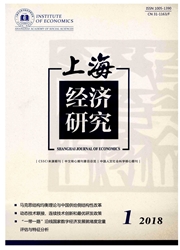

 中文摘要:
中文摘要:
该文利用城市首位度、城市指数、偏态系数等指标,对京津冀城市群的城市规模等级结构的分形特征进行描述,并从人口、经济、空间三个角度,利用Zipf模型对京津冀城市群的位序—规模分布特征进行回归分析。研究结果表明:京津冀城市群城市规模等级体系欠合理,大城市与中小城市的差距大,具有明显的分形特征;城市群规模等级结构失衡,极化效应明显,“中心—外围”格局显著,城市间差距较大,城市间经济联系不强。文章建议:通过区域顶层设计,提升京津两城市的双核辐射能力,同时强化副中心和新城功能,从而实现京津冀城市群的城市空间结构优化。
 英文摘要:
英文摘要:
Using urban primate index, 4-city index, skewness coefficient and other indexes, to describe the fractal featrure of urban scale structure in JingJinJi urban agglomeration. And having a regression analysis to the rank-size distribution for JingJinJi urban agglomeration based on the Zipf model, which from the points of population, economy and space. The results show that JingJinJi urban agglomeration of urban scale rank system is unreasonable, the large gap between big cities and small, medium-sized cities has obvious fractal feature. Urban agglomeration scale structural is imbalance, polarization effect and "center- periphery" pattern is obvious, large gap between cities, and economic links between cities is not strong. On the basis of analyzing the research results, putting forward suggestions for urban spatial structure optimizatior policy of JingJinJi urban agglomeration, from such three aspects, giving play to the top-level design guiding role, promoting dual-core radiation ability of Beijing and Tianjin, strengthening the sub-center and new town functions.
 同期刊论文项目
同期刊论文项目
 同项目期刊论文
同项目期刊论文
 期刊信息
期刊信息
